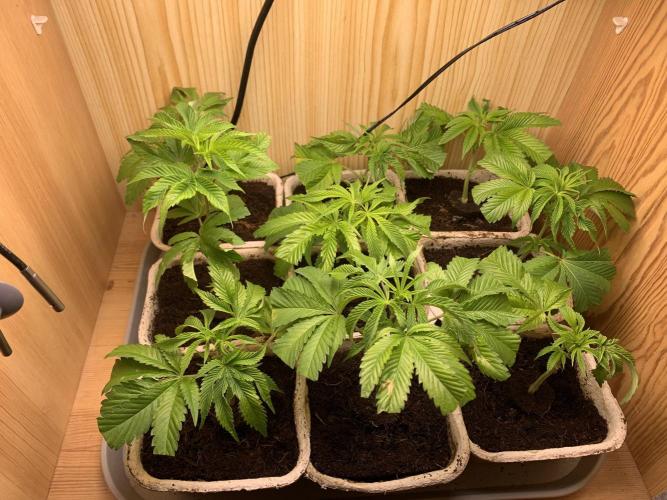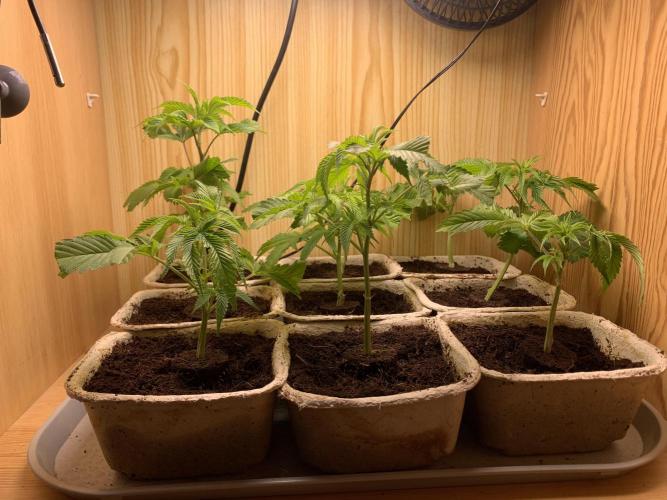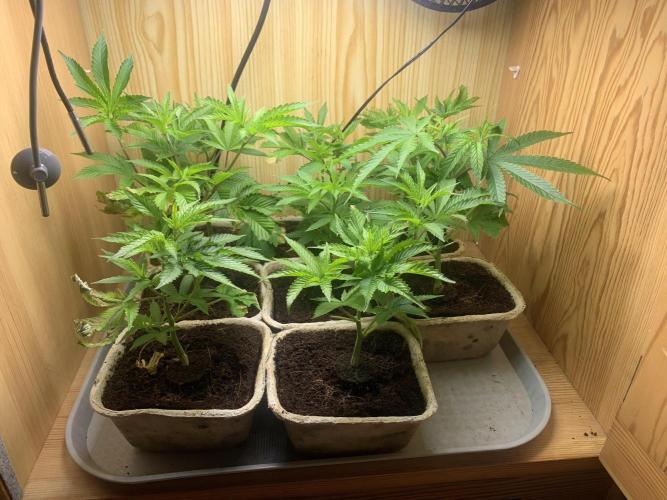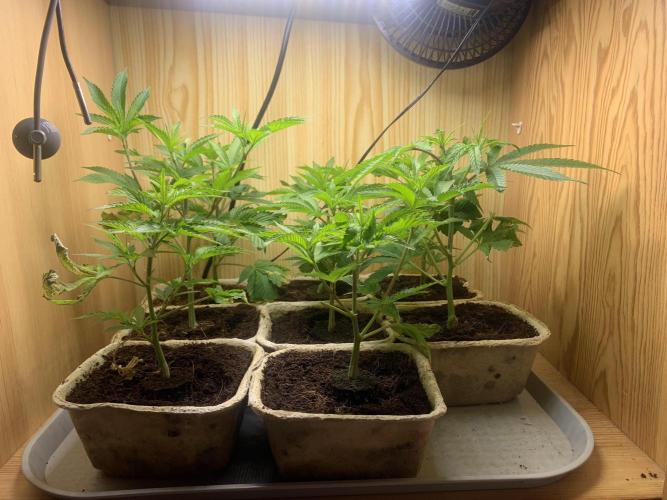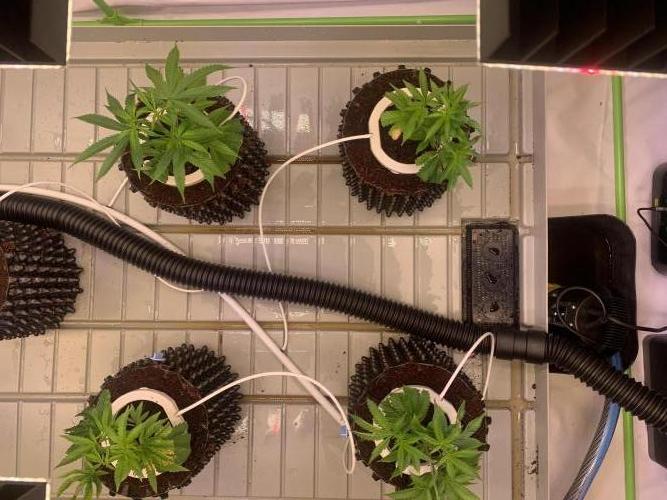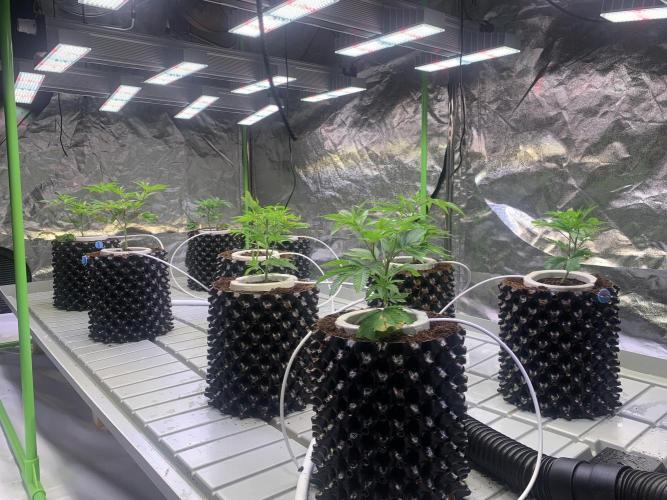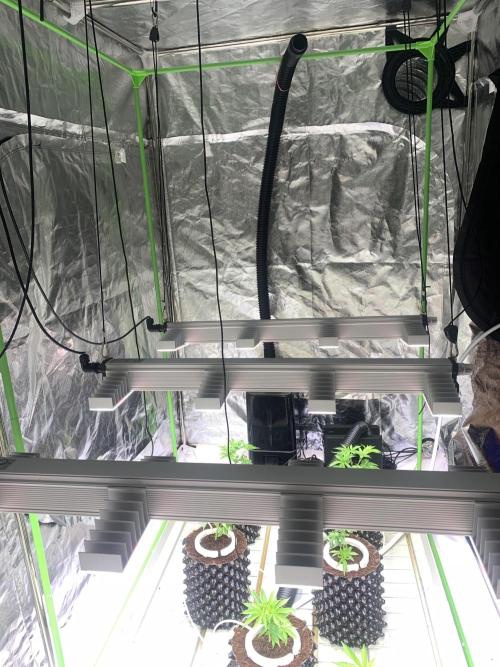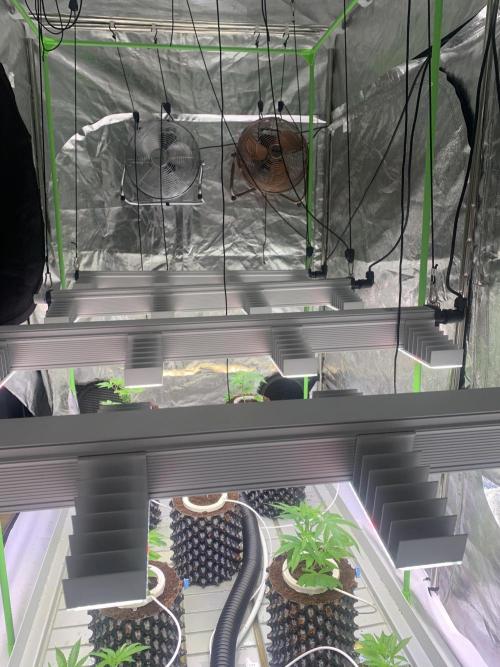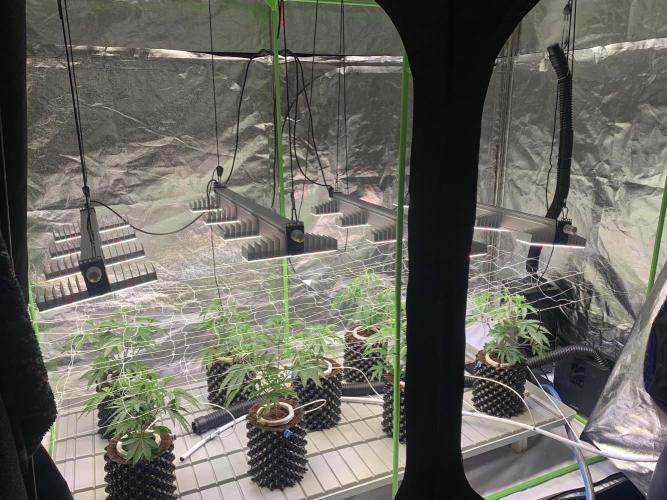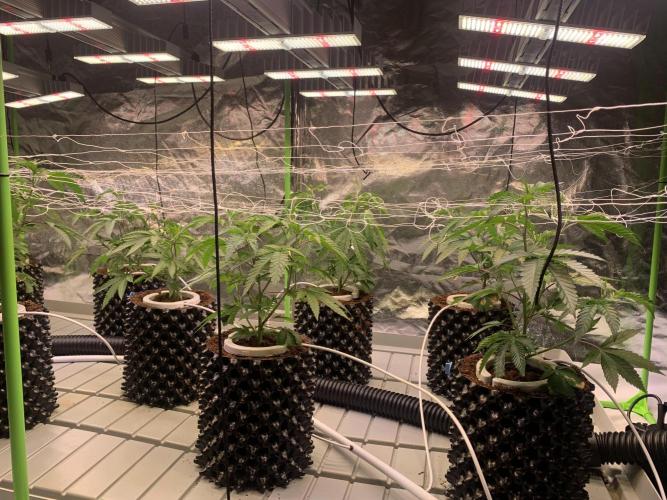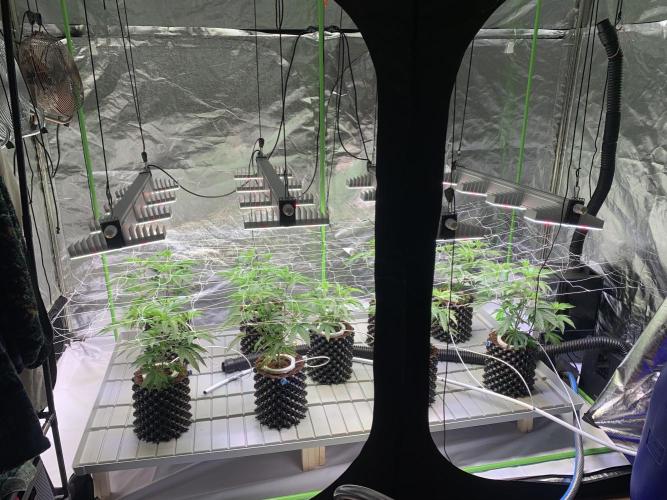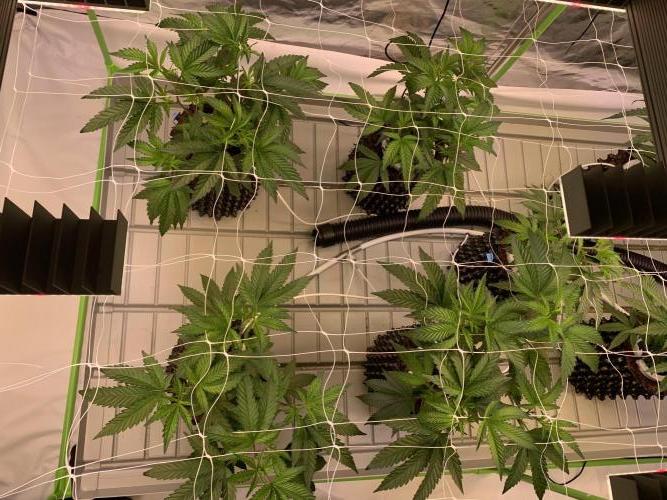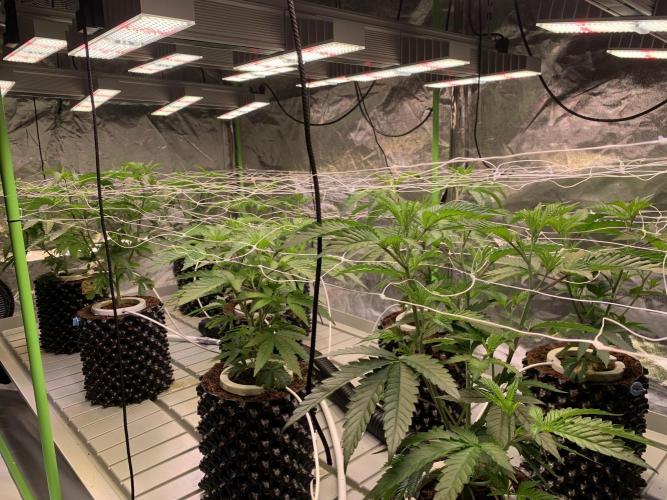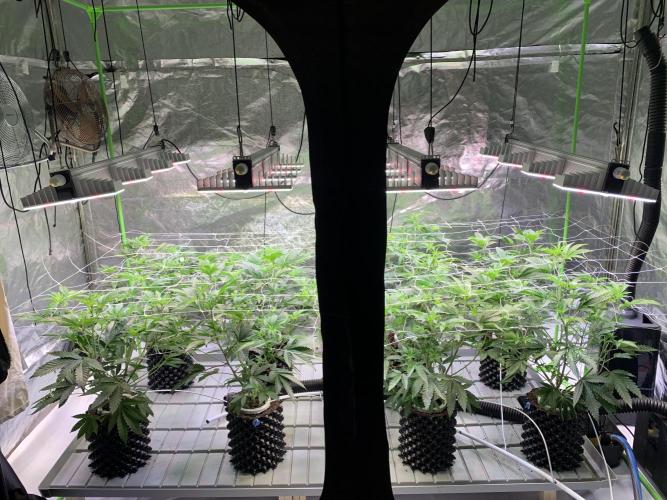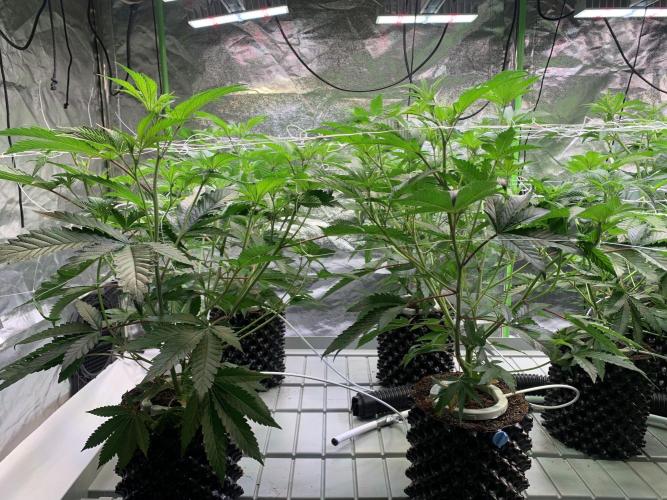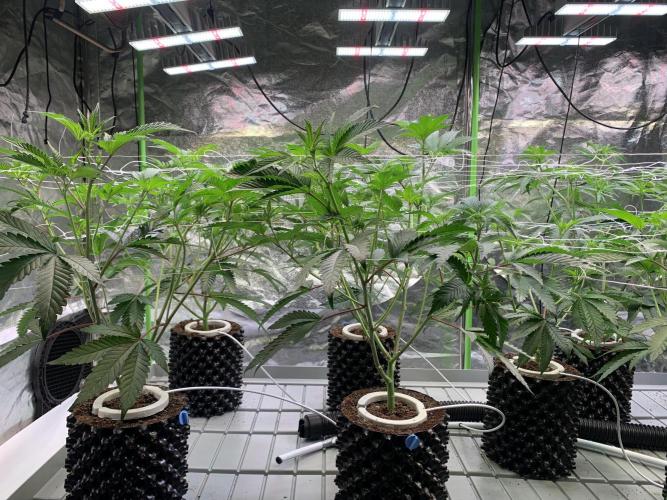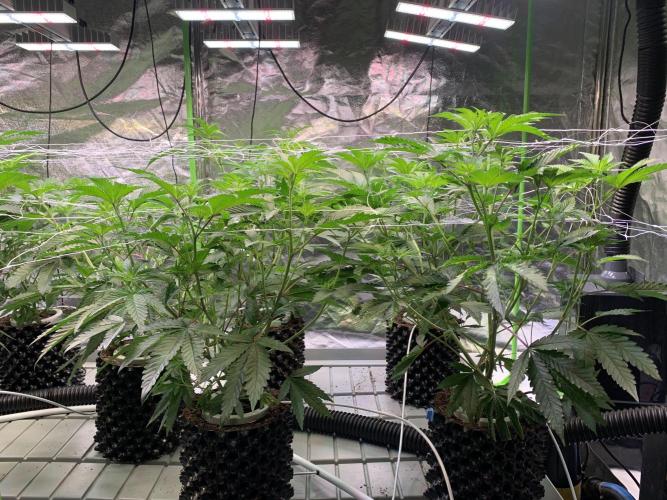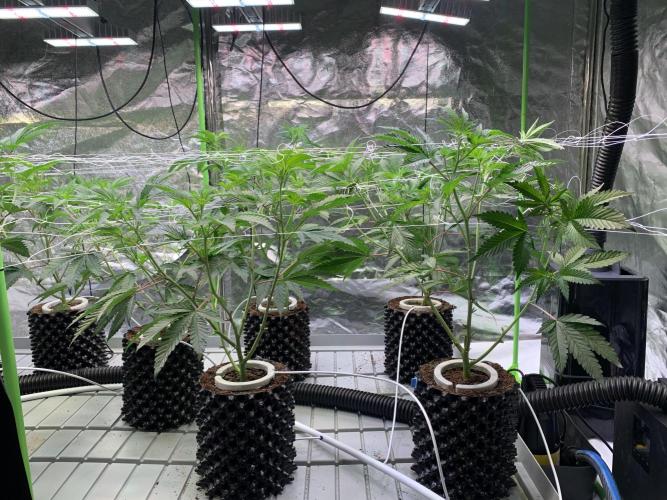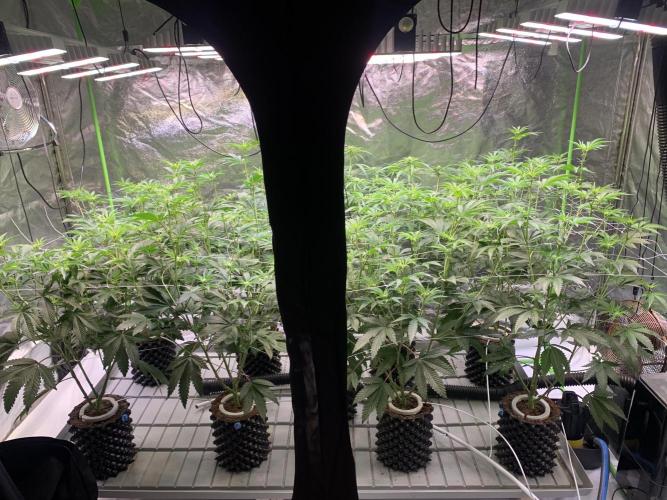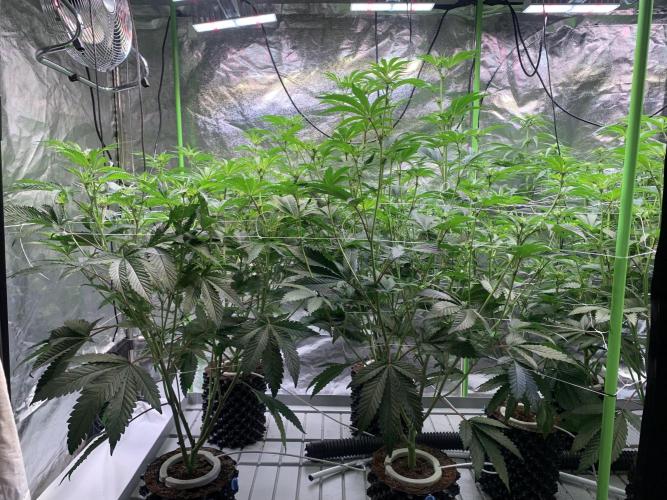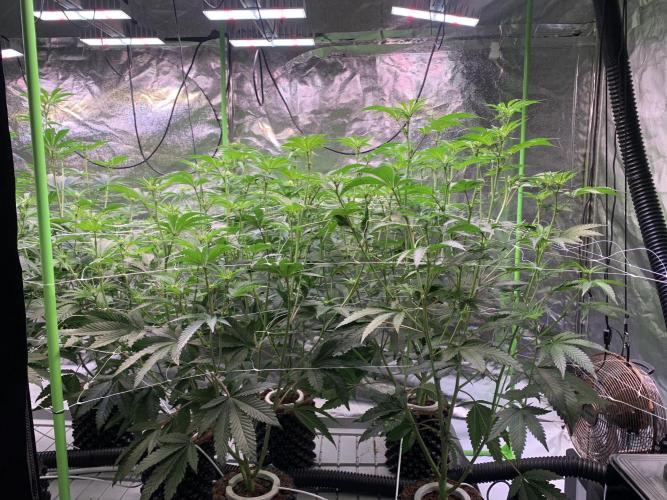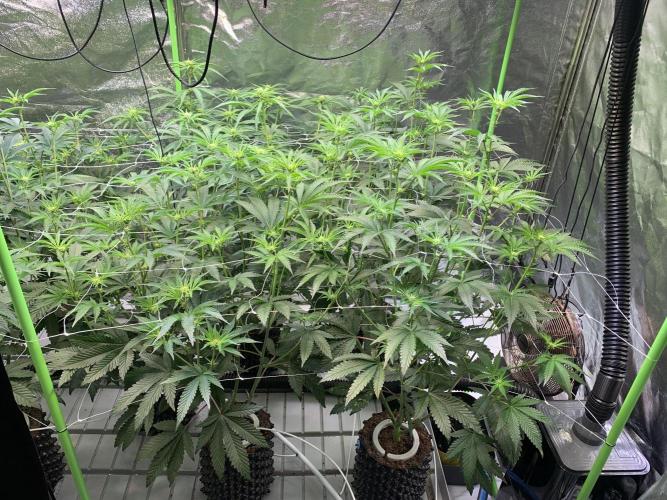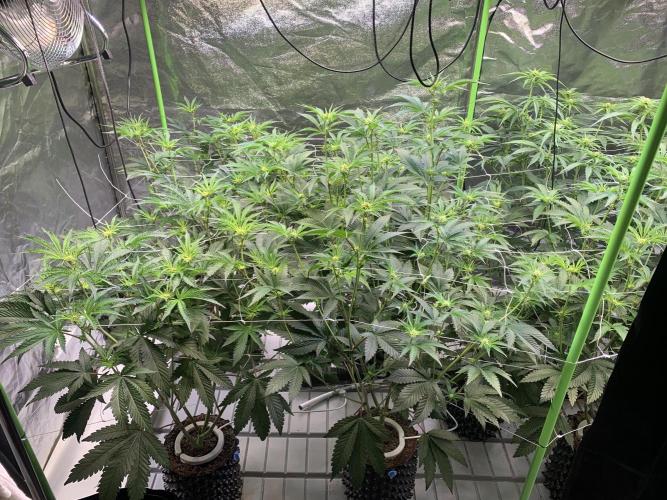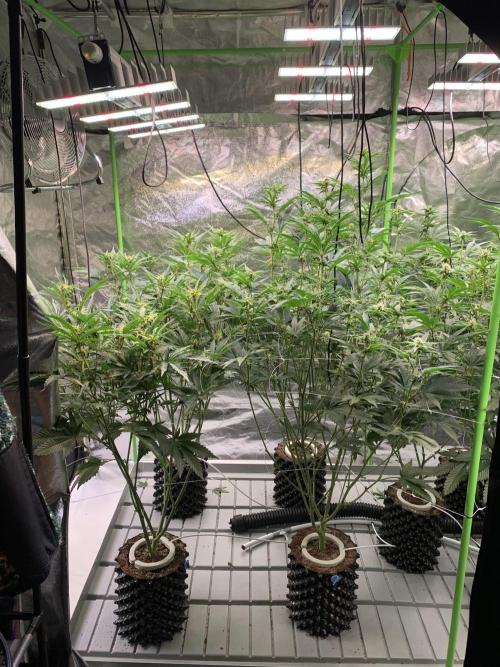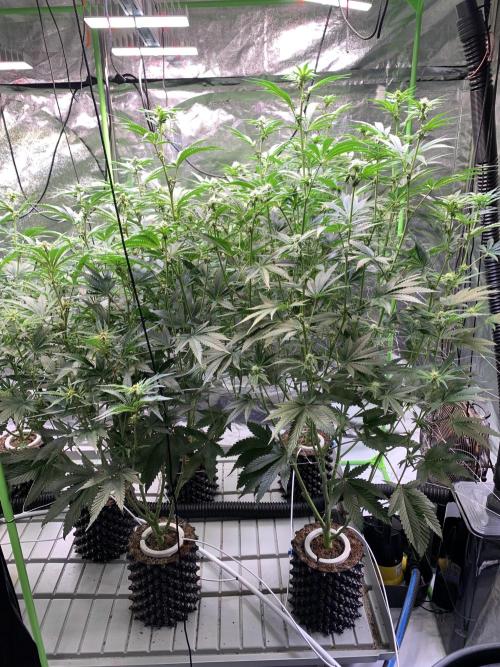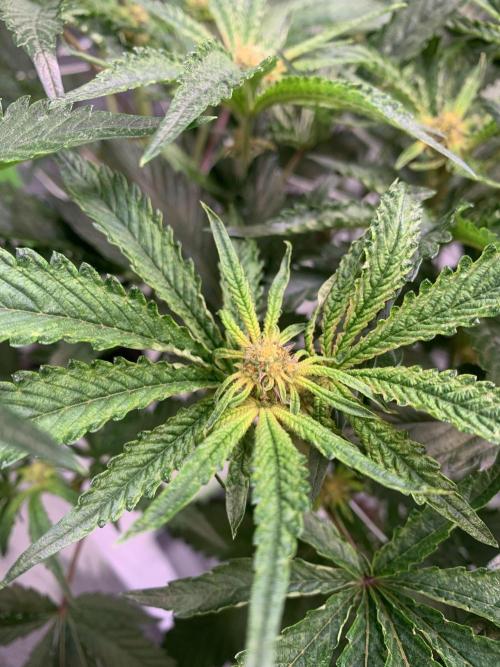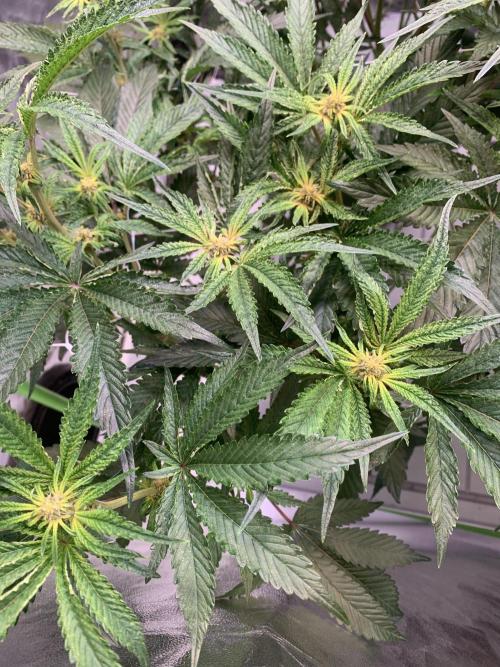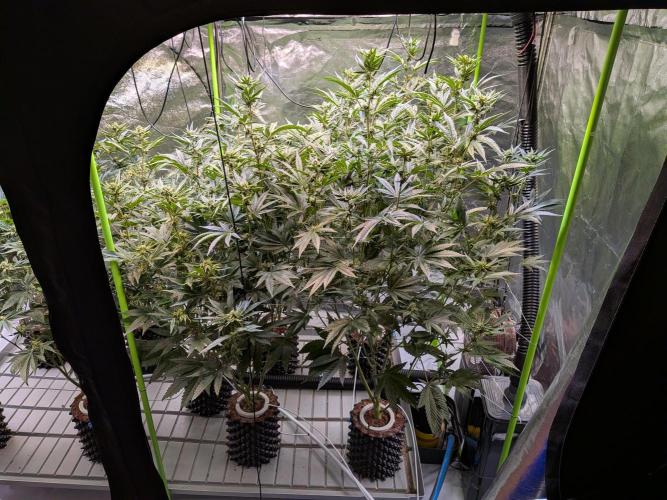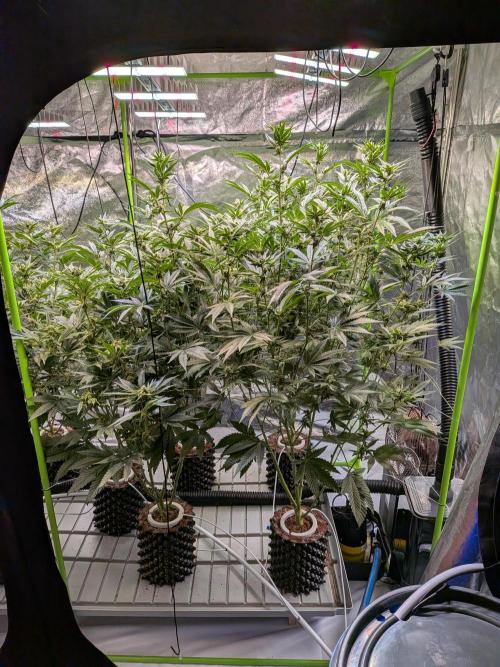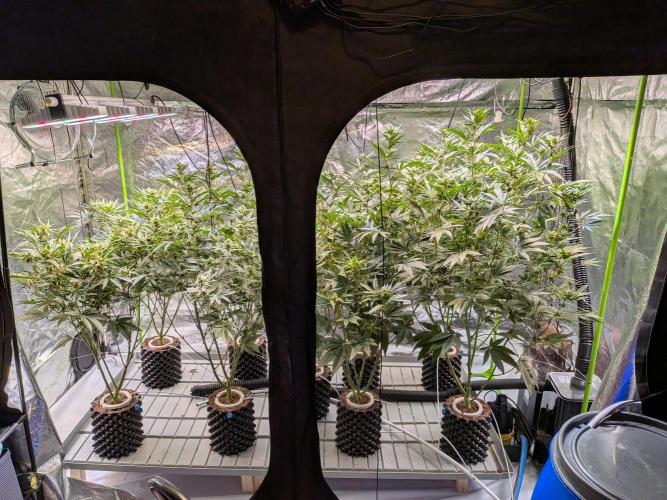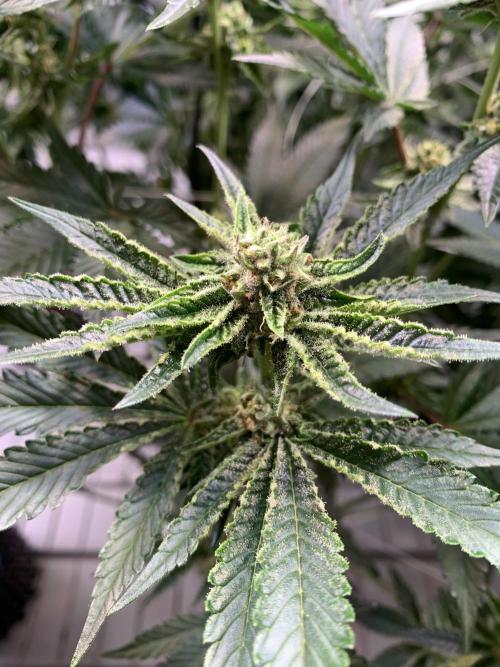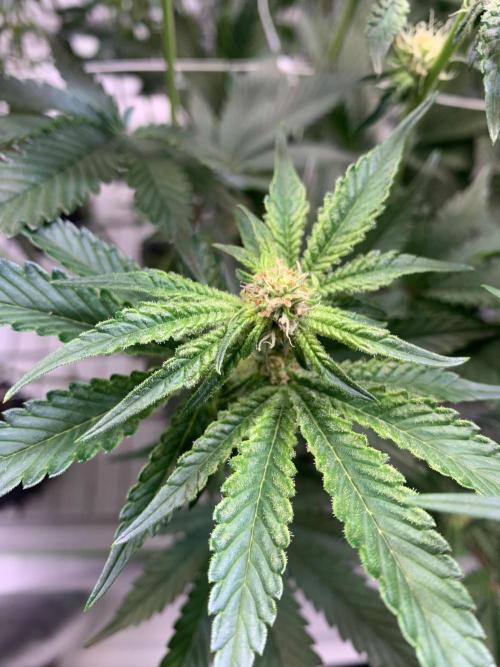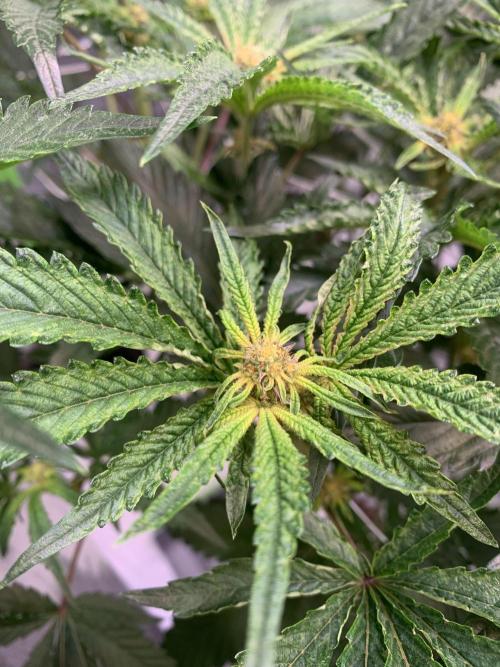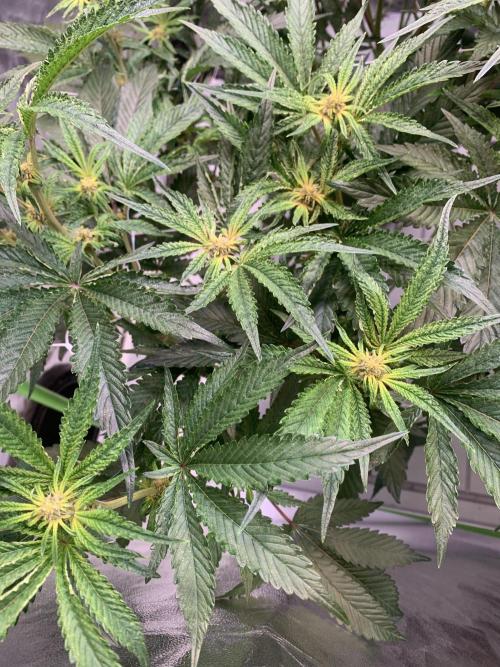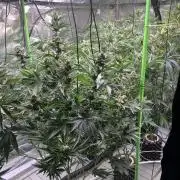The Grow Awards 2026 🏆 





























Sour Diesel. High frequency fertigation

Contr
Controller AI+

Drip
Smart-Drip Kit
Water Master
Indoor
Room Type
Transplantation
weeks 1, 3
12-12
weeks 4
LST
weeks 5
Defoliation
weeks 7
5 liters
Pot Size
Start at 10 Week
1
Week 1. Vegetation2mo ago
9 cm
Height
6 hrs
Light Schedule
25 °C
Day Air Temp
6.0
pH
No Smell
Smell
650 PPM
TDS
65 %
Air Humidity
19 °C
Solution Temp
22 °C
Night Air Temp
0.4 liters
Pot Size
25 cm
Lamp Distance
Nutrients 6

CANNA Coco A
1.5 mll

CANNA Coco B
1.5 mll

CANNA RHIZOTONIC
4 mll
Carl_Lauberbach Sour Diesel cuttings obtained from Growisland were received on 17.09.2025 and immediately transplanted into biodegradable pots filled with coco substrate.
The plants are irrigated once daily, ensuring at least 10 % runoff.
The final image displays the analysis of the tap water used. To achieve a calcium-to-magnesium ratio of 3:1, 0.4 mL Mg Mono (Canna) is added per liter of tap water. Subsequently, CalMag Agent is supplemented until an electrical conductivity of 650 µS/cm is reached.
A heater and a humidifier are connected to the growth chamber in order to maintain stable environmental conditions.
2 likes
comments
Share
Used techniques
Transplantation
Technique
2
Week 2. Vegetation2mo ago
14 cm
Height
6 hrs
Light Schedule
25 °C
Day Air Temp
6.0
pH
No Smell
Smell
650 PPM
TDS
65 %
Air Humidity
19 °C
Solution Temp
22 °C
Night Air Temp
0.4 liters
Pot Size
20 cm
Lamp Distance
Nutrients 6

CANNA Coco A
1.5 mll

CANNA Coco B
1.5 mll

CANNA RHIZOTONIC
4 mll
Carl_Lauberbach Three of the plants developed powdery mildew. The infected leaves were cut off, and the plants were sprayed with a 250 mg/L hypochlorous acid solution.
The humidity was reduced to 60%.
The plants are still watered once a day with 10% runoff.
3 likes
comments
Share
3
Week 3. Vegetation2mo ago
14 cm
Height
6 hrs
Light Schedule
26 °C
Day Air Temp
5.9
pH
No Smell
Smell
850 PPM
TDS
60 %
Air Humidity
20 °C
Solution Temp
22 °C
Night Air Temp
5 liters
Pot Size
0.5 liters
Watering Volume
30 cm
Lamp Distance
Nutrients 6

CANNA Coco A
2.3 mll

CANNA Coco B
2.3 mll

CANNA RHIZOTONIC
2 mll
Carl_Lauberbach Eight out of nine plants were topped on 26.09.25.
One plant was not topped due to an infection: the leaves showing symptoms were removed, which led to strongly impaired growth. To avoid further setback, this plant was left untreated.
The cuttings did not originate from the same mother plant, which is reflected in the different phenotypes. Some plants exhibit much denser growth than others.
In the small box, the environmental conditions were 25 °C / 21 °C and 55 % / 60 % RH (day/night).
The small humidifier was not very sensitive, which caused fluctuations in RH.
The plants were transplanted on 30.09.25.
For transplantation, the biodegradable pots were sprayed with water twice before removal, as the wet material can be detached easily without causing significant damage to the roots.
The plants were then placed into the grow tent and watered to runoff using the irrigation system.
The fertigation plan was switched from light to normal nutrient supplementation.
Initially, the pump runs twice per day for 5 minutes: the first cycle just before the lights are switched on, the second 9 hours later.
The flow rate per dripper is approximately 51 ml/min, resulting in about 500 ml water per plant per day. Since this amount is likely excessive, the pump runtime will be adjusted. The aim is to achieve approximately 10 % runoff.
The radiator is set to 22 °C.
The heater, humidifier, and exhaust fan are regulated via the AC Infinity Controller (AI) to maintain 26 °C and 60 % RH during the day, and 22 °C and 58 % RH during the night.
The lights are dimmed to the lowest setting.
4 likes
comments
Share
Used techniques
Transplantation
Technique
4
Week 4. Flowering1mo ago
37 cm
Height
12 hrs
Light Schedule
26 °C
Day Air Temp
5.9
pH
No Smell
Smell
850 PPM
TDS
58 %
Air Humidity
20 °C
Solution Temp
22 °C
Night Air Temp
5 liters
Pot Size
0.5 liters
Watering Volume
30 cm
Lamp Distance
Nutrients 7

CANNA Coco A
2.7 mll

CANNA Coco B
2.7 mll

CANNA RHIZOTONIC
2 mll
Carl_Lauberbach The central plant was topped on October 4th, 2025.
The photoperiod was switched on October 6th, 2025. At this point, the plants had reached a height of 32 cm.
The plants are now being watered five times per day, with an initial irrigation pulse of 14 minutes. The following four events occur at 2.5-hour intervals, each with a pulse duration of 6 minutes.
Today, the plants will be sprayed with a 250 mg/L hypochlorous acid solution to prevent potential pathogen growth.
6 likes
2 comments
Share
Used techniques
12-12
Technique
5
Week 5. Flowering1mo ago
60 cm
Height
12 hrs
Light Schedule
26 °C
Day Air Temp
5.9
pH
No Smell
Smell
850 PPM
TDS
58 %
Air Humidity
20 °C
Solution Temp
22 °C
Night Air Temp
5 liters
Pot Size
0.5 liters
Watering Volume
30 cm
Lamp Distance
Nutrients 7

CANNA Coco A
2.7 mll

CANNA Coco B
2.7 mll

CANNA RHIZOTONIC
2 mll
Carl_Lauberbach The plants were lollipopped on October 13th.
All branches below the fourth node were removed.
Additionally, low-stress training (LST) was applied to spread out the plants using two nets.
Hypochlorous acid is still being applied to prevent any pathogen growth.
The intensity of the lamps will be increased by one level three days after lollipopping, on October 16th.
4 likes
1 comment
Share
Used techniques
LST
Technique
6
Week 6. Flowering1mo ago
96 cm
Height
12 hrs
Light Schedule
26 °C
Day Air Temp
5.9
pH
No Smell
Smell
850 PPM
TDS
58 %
Air Humidity
20 °C
Solution Temp
22 °C
Night Air Temp
5 liters
Pot Size
0.5 liters
Watering Volume
30 cm
Lamp Distance
Nutrients 8

CANNA Coco A
2.7 mll

CANNA Coco B
2.7 mll

CANNA RHIZOTONIC
2 mll
Carl_Lauberbach Four days after lollipopping, the water uptake increased sharply, which led to the plants not being watered to runoff for 1–2 days.
Considering the plant volume one week after lollipopping, one more node could have been removed.
Defoliation will take place on October 27th, which is 21 days after the initiation of the 12/12 light cycle.
5 likes
1 comment
Share
7
Week 7. Flowering19d ago
130 cm
Height
12 hrs
Light Schedule
26 °C
Day Air Temp
5.9
pH
No Smell
Smell
850 PPM
TDS
58 %
Air Humidity
20 °C
Solution Temp
22 °C
Night Air Temp
5 liters
Pot Size
0.5 liters
Watering Volume
30 cm
Lamp Distance
Nutrients 8

CANNA Coco A
2.7 mll

CANNA Coco B
2.7 mll

CANNA RHIZOTONIC
2 mll
Carl_Lauberbach The plants were defoliated on day 21 of flowering. Some lower branches were also removed.
For the next grow, one additional node should be taken off during lollipopping.
Since the light switch was malfunctioning, the lights turned on at least three times during the flowering stage for about one second each time.
This led to partial revegetation of the plants, which was indicated by growth impairment, curled leaves, and cessation of bud development.
The light switch has been replaced, and the plants appear to be recovering after one week.
This is also the reason why the amount of fertilizer has not been adjusted until now.
5 likes
comments
Share
Used techniques
Defoliation
Technique
8
Week 8. Flowering11d ago
130 cm
Height
12 hrs
Light Schedule
26 °C
Day Air Temp
5.9
pH
No Smell
Smell
850 PPM
TDS
58 %
Air Humidity
20 °C
Solution Temp
22 °C
Night Air Temp
5 liters
Pot Size
0.5 liters
Watering Volume
30 cm
Lamp Distance
Nutrients 8

CANNA Coco A
2.7 mll

CANNA Coco B
2.7 mll

CANNA RHIZOTONIC
2 mll
Carl_Lauberbach Nothing has changed since last week.
The plants seem to be recovering slowly, as seen in the last two pictures.
Since the plants in the second row reacted more strongly, the buds still show a abnormal growth pattern.
2 likes
comments
Share
10
Week 10. Flowering9h ago
130 cm
Height
12 hrs
Light Schedule
26 °C
Day Air Temp
5.9
pH
No Smell
Smell
850 PPM
TDS
58 %
Air Humidity
20 °C
Solution Temp
22 °C
Night Air Temp
5 liters
Pot Size
0.5 liters
Watering Volume
30 cm
Lamp Distance
Nutrients 8

CANNA Coco A
2.7 mll

CANNA Coco B
2.7 mll

CANNA RHIZOTONIC
2 mll
Carl_Lauberbach Besides the revegetation, powdery mildew started to spread on the plants.
The mould developed due to excessively high relative humidity (RH) in the tent. The mean RH was around 62 %, and during periods of maximal transpiration this value rose to about 65 %.
Another likely reason for the mould development is that the cuttings supplied by Growisland were already infected. In the first week of growth, the plants showed infections which were treated.
Setting the RH to the desired level was not possible with the available equipment. The room around the tent is heated with a radiator, and additionally the tent is heated with a Thermoforge. A dehumidifier with a power consumption of 300 W was installed. Still, the plants transpired so much that neither the target temperature nor the target RH could be achieved. The goals for T and RH were 28 °C and 52 %. In practice, the values lie around 25 °C and 62 %.
Due to the high energy consumption, a larger dehumidifier will not be used. Instead, the plant count will be reduced from nine to six plants. Three plants were removed last week, which had the desired effect. With the reduced plant number, the environmental parameters in the tent are now close to the target range.
The grow will also be finished early, as the revegetation of the plants had a long-lasting effect on bud development. The buds closer to the lights appeared to recover in an acceptable way, but the buds deeper in the canopy showed altered phenotypes. They did not develop new stigmas, and the stigmas present before revegetation withered. The buds have an extremely dense structure and show little development of trichomes. In addition, terpene production appears to be reduced, as the plants mainly smelled like grass.
I expected the plants to recover, since the symptoms developed in the first week and the underlying cause was resolved. However, they did not, and the flowers do not appear suitable for consumption, at least not with any enjoyment.
In future, if a similar situation arises, the grow should be terminated immediately and restarted with new plants.
1 like
1 comment
Share
Enjoying this diary? Follow for more updates!
Prefer the old Diary view?
Go back to the old Diary view









